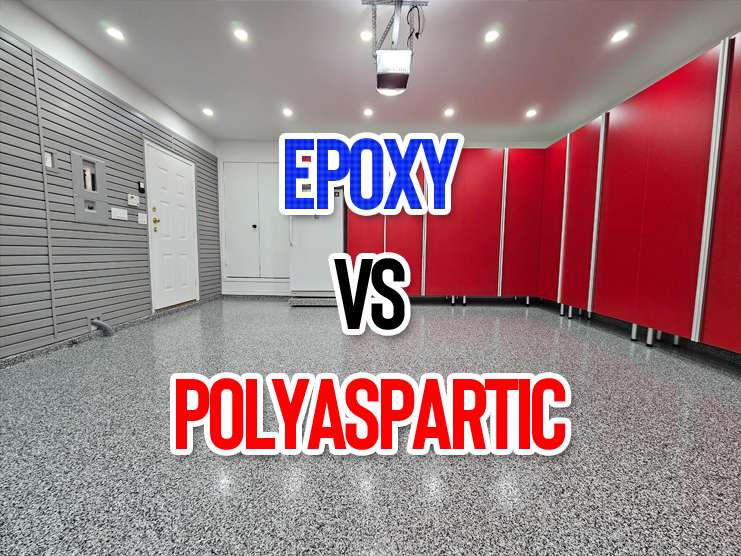2023
Unlocking the Garage's Potential: A Deep Dive into Polyaspartic vs. Epoxy Coating Systems

Before we dive into the comparative analysis, let's set the stage. Picture this: a concrete expanse, often neglected and overlooked, yearning for a makeover. Whether it's housing vintage automobiles, serving as a workshop haven, or doubling up as a recreational space, your garage deserves royal treatment. Here, the battle between polyaspartic and epoxy coatings takes center stage, each with its arsenal of benefits and nuances.
Let's start with epoxy, the seasoned veteran in the realm of garage coatings. Revered for its durability and ability to withstand heavy traffic, epoxy has long been the faithful choice for garage owners. Its application process, akin to an alchemical ritual, involves mixing resin and hardener to create a chemical bond that fortifies the concrete substrate. The result? A glossy sheen that exudes sophistication and resilience.
However, like any seasoned warrior, epoxy comes with its share of limitations. While it boasts commendable resistance to chemicals and abrasions, its Achilles heel lies in its susceptibility to UV damage. Prolonged exposure to sunlight can lead to yellowing and discoloration, detracting from the pristine allure it once possessed.
Enter polyaspartic, the rising star poised to disrupt the status quo of garage coatings. With its rapid cure time and unparalleled UV resistance, polyaspartic emerges as a formidable contender in the arena. Picture a seamless application process, akin to a well-choreographed dance, where layers are effortlessly applied, and curing occurs in the blink of an eye. This swift turnaround time not only minimizes disruption but also allows for same-day return to service—an asset for those unwilling to sacrifice precious time in pursuit of garage perfection.
But wait, there's more. Polyaspartic's UV stability is not to be underestimated. Unlike its epoxy counterpart, polyaspartic retains its clarity and vibrancy even in the face of relentless sunlight, ensuring that your garage remains a beacon of elegance for years to come. Its resistance to yellowing and fading is a testament to its superior formulation, a marriage of cutting-edge technology and uncompromising quality.
Yet, polyaspartic's ascent to greatness is not without its challenges. Critics point to its higher upfront cost compared to epoxy, a factor that may give pause to budget-conscious consumers. Furthermore, while polyaspartic boasts commendable chemical resistance, it may not match the rock-solid durability of epoxy in certain industrial settings. However, in the realm of residential garage applications, where aesthetics and ease of maintenance reign supreme, polyaspartic emerges as the clear victor.
In conclusion, the choice between polyaspartic and epoxy coatings ultimately boils down to individual preferences and priorities. If you prioritize swift installation, unrivaled UV resistance, and a seamless finish, polyaspartic emerges as the clear frontrunner. However, if budget constraints and industrial-grade durability take precedence, epoxy remains a formidable option.
As a seasoned garage expert with a preference for polyaspartic coatings, I stand by my assertion that polyaspartic is the undisputed champion in the realm of residential garage transformations. Its unmatched blend of aesthetics, durability, and ease of maintenance makes it the discerning choice for those seeking to elevate their garage to new heights of perfection. So let a professionally installed polyaspartic coating be the crowning jewel in your garage's coronation ceremony.

Some of the benefits of our garage floor coatings include:
Easy to clean and maintain - Broom or wet mop
Minimal maintenance - No chemicals required to clean
Chemical Resistance - Oil & gas won't penetrate
Long-Lasting - 15-year warranty
Durable - 4x more abrasion resistant than epoxy
Tough - Won't lift under hot tires
Slip Resistance - Safe for kids to play
Our polyaspartic coatings can be installed in temperatures as low as -30°C
